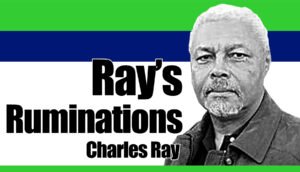
I am saddened anew that my hometown, Cauayan, has remained in the list of poverty-stricken communities in the province.
Media reports last week showed that my southern town, along with eight others – are in the ‘exclusive list’ of the Provincial Development Council, a roster which is actually not something to brag about. Also in the list are Calatrava, EB Magalona, Hinigaran, Binalbagan and Isabela as well as three other southern municipalities – Hinoba-an, Ilog and Candoni.
The PDC report came almost two months after the global community observed the International Day for the Eradication of Poverty – on Oct. 17. The annual observance aims “to promote understanding and dialogue between people living in poverty and the wider society.”
This year’s observance focused on the theme “Decent Work and Social Protection: Putting Dignity in Practice for All”, which “draws on first-hand testimonials showing that those trapped in extreme poverty often work long, grueling hours in dangerous, unregulated conditions but still cannot earn enough income to adequately support themselves and their families.”
***
Puzzling if you come to think about it that Binalbagan and neighboring Isabela are classified as ‘poverty stricken’ considering that the two communities are sugar-producing areas. However, microeconomics has a ready explanation – the fact that, for so long, money has not been trickling down to the coffers and the meal table of hacienda workers and their families.
Just as ironic is the situation in my hometown. Cauayan is classified as a first-class municipality, apparently by virtue of its revenue (an average of at least P200 million annually) and also its population – about 110,000, which is the biggest among towns in the province.
The lack of steady means of livelihood, along with not so adequate services to address health and nutrition issues, are among the poverty indicators in the country.
I posed the question on the disparity between town income and the poverty profile in our hometown to my brother, who worked on and off with the LGU for years.
He had a ready explanation: with such a big population spread across mountain, hillside, coastal and inland barangays, and with limited access to livelihood opportunities, poverty has been etched in the stream of local consciousness.
The Capitol sees the PDC report as a reminder for local government units on the dire situation and a guide on measures the LGU will undertake to address the economic problem.
The glaring thing is that the economic state in our hometown and other areas has long been there and, sadly, not even educating those in that demographic profile, can easily solve the problem despite the notion that education is one of the most workable solutions to people’s worsening economic situation.
We are glad that Gov. Jose Eugenio Lacson has articulated the readiness of the government to assist the communities in line with its poverty alleviation program.
Back in my college days, when I became more aware of the economic state of families in my hometown, and that was five decades ago, I already realized that doleouts are palliative and band-aid measures and that Juan and his family must be taught how to fish instead of being given fish for their subsistence.
But the dependency seems to have been greatly ingrained in many people’s mindset. Take this case in point, my brother said, cooperatives were established for livelihood purposes and prior to their full-swing operations, members were trained on their responsibilities and privileges, like funding assistance.
The cooperatives formed through the years, however, were apparently poorly managed as they are no longer operational because loan repayments have been very minimal, he said, adding: the LGU is back to square one of the poverty cycle, meaning, assistance for mostly hand-to-mouth existence, a daunting challenge, indeed, for local government executives.
I am not saying that assistance must not be extended, especially that the southern community is prone to calamities, like typhoons, earthquakes and extreme heat but beyond these stop-gap measures is the challenge for the LGU to initiate more creativity, innovation and vision in its poverty alleviation programs.
Among the measures that can be undertaken is the identification of industries and businesses that can thrive in the area considering push-and-pull-factors, like distance from the key centers, utility and communication and other services.
That way, potential investors can be attracted and provided with adequate incentives for mutual growth. Likewise, support to entrepreneurs is in order for initiatives to prosper.
I see domestic tourism as a potential industry in the town based on the experience of Sipalay City, considering the natural resources, from scenic mountain views to waterfalls and pristine beaches.
Developing the tourism infrastructure promises great return-of-investments, if we study the experiences of communities that grew through well-managed rural tourism programs, which have been tested-and-proven to bring benefits down to the grassroots.
***
Allow me to share some of the measured recommended by World Vision to address the incidence of global poverty.
World Vision is an international non-governmental organization, “a partnership of Christians whose mission is to follow our Lord and Savior Jesus Christ in working with the poor and oppressed to promote human transformation, seek justice, and bear witness to the good news of the Kingdom of God.”
World Vision recognizes the need to educate children, which it considers as one of the best solutions to the problem of poverty.
It also suggests community access to clean and portable water and better health care for the people. In addition, it promotes better nutrition for children.
Another key measure is the support for environmental programs for the protection of communities.
Vital to addressing the global issue of poverty are the empowerment of women and girls to, among others, strengthen their role in family economics, as well as the prevention of child marriages, which apparently contribute to the perpetration of the cycle of poverty.
***
I look forward to that day in my lifetime when my townsfolk can rise above their present level of economic situation toward a better quality of their lives.
***
Whoever closes his ear to the cry of the poor will himself call out and not be answered. – Proverbs 21:13 | NWI




